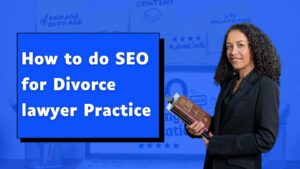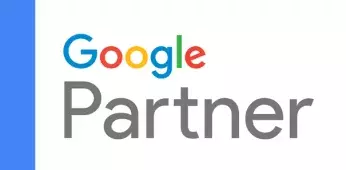SEO, or Search Engine Optimization, is the practice of improving the ranking of a website or web page in a search engine’s unpaid results. These unpaid results are known as “organic” results, as opposed to paid advertising results, which are known as “paid” or “sponsored” results. In order to understand SEO, it’s important to have a basic understanding of some common terms and concepts.
Here is a glossary of some common SEO terms:
- Algorithm: An algorithm is a set of rules or instructions that a search engine uses to determine the relevance and ranking of a website or web page in its search results.
- Backlink: A backlink is a link from one website or web page to another. In the context of SEO, backlinks are important because they can improve the ranking of a website or web page in search results.
- Black hat SEO: Black hat SEO refers to techniques or tactics that are used to improve a website’s ranking in search results in ways that are not approved of by search engines. These techniques may include spamming, keyword stuffing, and link schemes.
- Content: Content refers to the text, images, videos, and other types of media that are on a website or web page. In the context of SEO, high-quality content is important because it can help improve a website’s ranking in search results.
- Keyword: A keyword is a word or phrase that is relevant to a website or web page and that is used by search engines to determine the relevance and ranking of that website or web page in search results.
- Meta tag: A meta tag is a piece of HTML code that is placed in the head section of a website or web page. Meta tags can include information about the page’s content, such as its title and description, which can be used by search engines to understand the content of the page and to determine its ranking in search results.
- On-page optimization: On-page optimization refers to the process of optimizing individual web pages in order to improve their ranking in search results. On-page optimization can include techniques such as using relevant keywords, optimizing the page’s title and description, and making sure the page’s content is high-quality.
- Off-page optimization: Off-page optimization refers to the process of improving a website or web page’s ranking in search results by building high-quality backlinks from other websites.
- Search engine: A search engine is a software program that searches a database of websites and web pages in order to provide relevant results in response to a user’s search query. Some examples of search engines include Google, Bing, and Yahoo.
- White hat SEO: White hat SEO refers to techniques or tactics that are used to improve a website’s ranking in search results in ways that are approved of by search engines. These techniques may include creating high-quality content, building backlinks from reputable websites, and optimizing the website’s on-page elements.
- Anchor text: Anchor text is the visible text that is used to create a hyperlink. In the context of SEO, anchor text is important because it can help search engines understand the content and relevance of the linked page.
- crawl: a crawl is the process that search engines use to discover new and updated pages on the internet. Search engine crawlers, also known as spiders, follow links from one page to another and index the content of each page that they visit.
- crawl budget: a crawl budget is the number of pages on a website that search engine crawlers will visit and attempt to index in a given period of time.
- crawl depth: crawl depth is the number of clicks it takes for a search engine crawler to reach a specific page on a website.
- crawl rate: crawl rate is the speed at which a search engine crawler visits and indexes pages on a website.
- index: an index is a database of all the pages that a search engine has discovered and that it believes are relevant and important enough to be included in its search results.
- index coverage: index coverage is a report that shows which pages on a website are included in a search engine’s index and which pages are not.
- organic traffic: organic traffic refers to the visitors that come to a website from search engine results pages (SERPs) without clicking on a paid ad.
- SERP: a SERP, or search engine results page, is the page that a search engine displays after a user types in a query and hits “search.” The SERP includes a list of results that the search engine considers most relevant and authoritative for the query.
- sitemap: a sitemap is a file that lists all the pages on a website, along with additional metadata about each page, such as its relevance and how often it is updated. Sitemaps can be used by search engines to discover and crawl pages on a website that may not be easily discoverable by following links.
- Alt text: Alt text, or alternative text, is a short description of an image that is used by screen readers and search engines to understand the content of the image. Alt text is important for SEO because it can help search engines understand the context and relevance of images on a website.
- Canonical tag: A canonical tag is an HTML tag that is used to tell search engines that a specific URL represents the master copy of a web page. Canonical tags are used to consolidate duplicate content and to prevent search engines from penalizing a website for having duplicate content.
- Domain authority: Domain authority is a measure of the strength and quality of a website’s domain. It is calculated by a number of factors, including the quality and quantity of backlinks, the age of the domain, and the number of pages on the domain. Domain authority is important because it can influence a website’s ranking in search results.
- Googlebot: Googlebot is the name of the search engine crawler that is used by Google to discover and index web pages.
- Headings: Headings are used to organize and structure the content on a web page. There are six levels of headings, with “H1” being the most important and “H6” being the least important. Headings are important for SEO because they help search engines understand the hierarchy and structure of the content on a page.
- Internal link: An internal link is a link from one page on a website to another page on the same website. Internal links are important for SEO because they help search engines understand the structure and hierarchy of a website and they can help distribute link equity (the value that is passed through links) throughout a website.
- Keyword density: Keyword density is the percentage of times a keyword or phrase appears on a web page compared to the total number of words on the page. In the past, keyword density was an important factor in SEO, but today, search engines place less emphasis on it and instead focus more on the overall relevance and quality of the content.
- Long-tail keyword: A long-tail keyword is a keyword or phrase that is more specific and longer than a short, general keyword. Long-tail keywords are important for SEO because they can be less competitive and can help attract more targeted traffic to a website.
- Meta description: A meta description is a short summary of a web page’s content that is included in the page’s HTML code. The meta description is typically displayed in the search results below the page’s title and URL. Meta descriptions are important for SEO because they can help attract clicks from the search results and can influence the ranking of a page.
- XML sitemap: An XML sitemap is a file that is used to list the URLs on a website and to provide additional metadata about each URL, such as its relevance and the date it was last updated. XML sitemaps are used by search engines to discover and crawl pages on a website that may not be easily discoverable by following links.
- Breadcrumb: A breadcrumb is a navigation element that shows the path of a webpage in a hierarchy. Breadcrumbs are often displayed at the top of a webpage and can help users understand the structure of a website and navigate to higher-level pages. Breadcrumbs can also be used by search engines to understand the structure of a website and can influence the ranking of webpages.
- Domain: A domain is a unique name that is used to identify a website on the internet. Domains are usually registered through a domain registrar and can be used to access a website by typing the domain name into a web browser’s address bar.
- Domain name system (DNS): The domain name system (DNS) is a database that is used to map domain names to IP addresses. When a user types a domain name into a web browser, the DNS is used to look up the corresponding IP address and to connect the user to the website.
- Frame: A frame is a HTML element that is used to divide a webpage into separate sections. Frames can be used to display multiple pages within a single webpage, but they can cause problems with SEO because search engines may have difficulty understanding the content and context of the pages within the frames.
- Geotargeting: Geotargeting is the practice of targeting a website or web page to specific geographic locations. Geotargeting can be used to optimize a website or web page for specific countries, regions, or cities.
- Hreflang tag: The hreflang tag is an HTML attribute that is used to indicate to search engines which language a webpage is written in and which country it is targeted to. Hreflang tags can help search engines serve the correct version of a webpage to users in different countries and languages.
- Link building: Link building is the practice of acquiring backlinks from other websites in order to improve the ranking of a website or web page in search results. Link building can be done through a variety of methods, including creating high-quality content that other websites want to link to, guest blogging, and participating in online communities and forums.
- Link equity: Link equity, also known as link juice, is the value that is passed through links from one webpage to another. Link equity is important for SEO because it can influence the ranking of a webpage in search results.
- Link farm: A link farm is a group of websites that are created specifically for the purpose of exchanging backlinks in an attempt to manipulate search engine rankings. Link farms are generally considered to be a form of spam and can be penalized by search engines.
- Robots.txt: Robots.txt is a file that is used to instruct search engine crawlers which pages or sections of a website to crawl and which pages or sections to ignore. Robots.txt is important for SEO because it can help prevent search engines from indexing low-quality or irrelevant pages on a website.

















